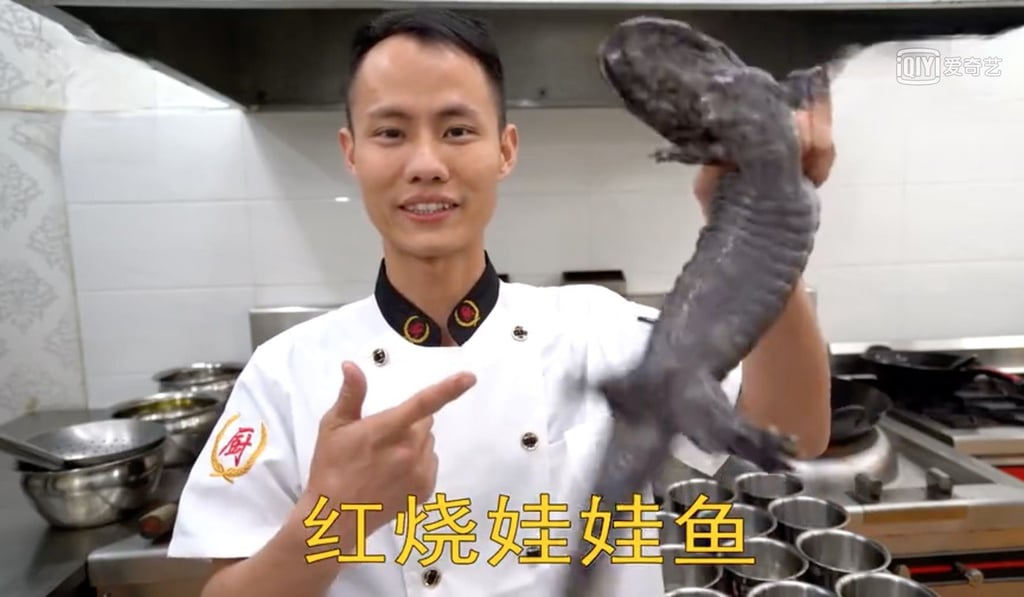Chinese cooking star kills and chops up rare giant salamander on camera to online fans’ horror
- His down-to-earth style, dubbed ‘hard-core food’, won chef Wang Gang millions of fans
- Video of him killing and cooking the endangered amphibian was too much for some

A down-to-earth video chef with more than 10 million online fans was not expecting the stir he created when he introduced his audience to the art of preparing a meal out of a critically endangered giant salamander – after killing it in front of the camera.
The four-minute video, which went viral last week, attracted widespread controversy. Some people were concerned that the main ingredient was a protected species, while others were shocked to see the animal killed and prepared on camera.
The video opens, like all of the 29-year-old chef’s videos, with his usual greeting: “Hi everybody, I'm Wang Gang. Today I will teach you how to make braised salamander.”
As always, Wang is dressed in his crisp, white chef’s jacket. In his left hand, he holds the struggling salamander up to the camera before knocking it out with the blunt end of his cleaver, slicing it open, washing it clean and chopping it to pieces.

Wang has apologised for the salamander video, but his regret has not, so far, turned down the heat on the discussion which it has generated among China’s vibrant online community.
In a video apology posted to social media this week, Wang explained that the salamander was not a protected animal taken from the wild. Instead, he said, it had been sourced from a farm.